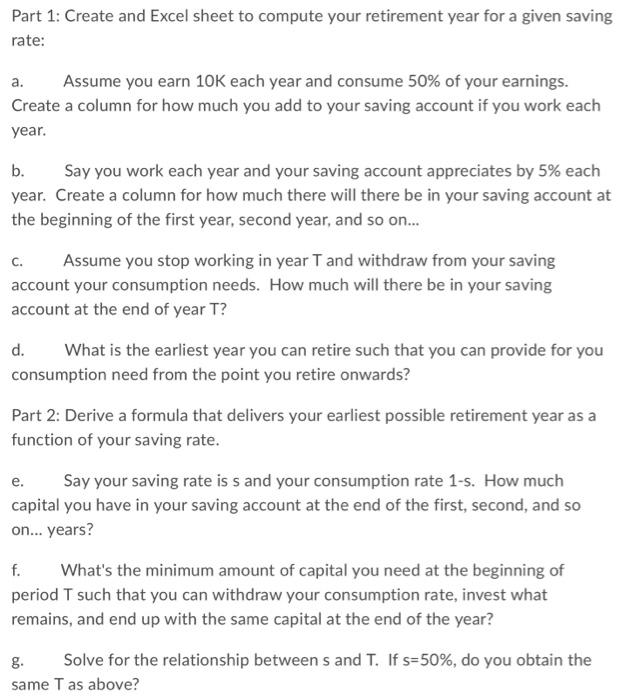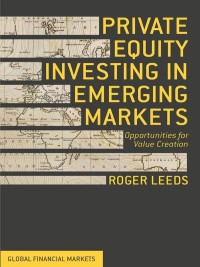Create an Excel sheet to compute your retirement year for a given saving rate:
a. Assume you earn 10K each year and consume 50% of your earnings. Create a column for how much you add to your saving account if you work each year.

please answer all thanks
Part 1: Create and Excel sheet to compute your retirement year for a given saving rate: a. Assume you earn 10K each year and consume 50% of your earnings. Create a column for how much you add to your saving account if you work each year. b. Say you work each year and your saving account appreciates by 5% each year. Create a column for how much there will there be in your saving account at the beginning of the first year, second year, and so on... Assume you stop working in year T and withdraw from your saving account your consumption needs. How much will there be in your saving account at the end of year T? C. d. What is the earliest year you can retire such that you can provide for you consumption need from the point you retire onwards? Part 2: Derive a formula that delivers your earliest possible retirement year as a function of your saving rate. e. Say your saving rate is s and your consumption rate 1-s. How much capital you have in your saving account at the end of the first, second, and so on... years? f. What's the minimum amount of capital you need at the beginning of period T such that you can withdraw your consumption rate, invest what remains, and end up with the same capital at the end of the year? g. Solve for the relationship between s and T. If s=50%, do you obtain the same T as above? Part 1: Create and Excel sheet to compute your retirement year for a given saving rate: a. Assume you earn 10K each year and consume 50% of your earnings. Create a column for how much you add to your saving account if you work each year. b. Say you work each year and your saving account appreciates by 5% each year. Create a column for how much there will there be in your saving account at the beginning of the first year, second year, and so on... Assume you stop working in year T and withdraw from your saving account your consumption needs. How much will there be in your saving account at the end of year T? C. d. What is the earliest year you can retire such that you can provide for you consumption need from the point you retire onwards? Part 2: Derive a formula that delivers your earliest possible retirement year as a function of your saving rate. e. Say your saving rate is s and your consumption rate 1-s. How much capital you have in your saving account at the end of the first, second, and so on... years? f. What's the minimum amount of capital you need at the beginning of period T such that you can withdraw your consumption rate, invest what remains, and end up with the same capital at the end of the year? g. Solve for the relationship between s and T. If s=50%, do you obtain the same T as above







